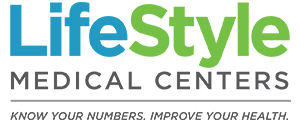Bad cholesterol is a sneaky risk factor (sometimes invisible to the naked eye) that everyone should be aware of. It doesn’t discriminate and can be found in people of all shapes and sizes, ages, races and genders. Like many health topics, understanding cholesterol is vital to enable you to manage it effectively. Here are some cholesterol facts and fiction worth knowing.
Fact: You need cholesterol to stay alive.
Cholesterol helps maintain cell membranes, make hormones, generate vitamin D and digest food. It’s a fatty, waxy substance that’s part of every cell in your body.
Cholesterol is transported through the body with the help of lipoproteins. The two types of lipoproteins are low-density lipoproteins (LDL), also known as “bad” cholesterol, and high-density lipoproteins (HDL), also known as “good” cholesterol.
Fiction: There’s nothing you can do if you’ve inherited high levels of LDL (“bad”) cholesterol.
LDL cholesterol is the “bad” cholesterol that can result in waxy build-ups on arteries and eventually lead to heart disease. Some people do carry an error in their genes that causes their body to produce higher-than-normal levels of LDL cholesterol, leaving them more likely to have a heart attack, stroke or premature death. The technical name for this is familial hypercholesterolemia, and 1 in every 500 people has it.
Inheriting the high LDL gene does not mean you’re destined to develop heart disease. LDL, also known by some as “lousy cholesterol,” can be managed with diet and exercise even if elevated LDL cholesterol runs in your family.
Fiction: You can only increase HDL (“good”) cholesterol through healthy foods like nuts and avocados.
The partner lipoprotein to LDL is HDL, which is the good kind of cholesterol. HDL helps remove bad cholesterol from the body. HDL moves through the body, collects LDL and either brings it back to the liver to be digested or moves it to another part of the body where it can be used productively. The higher your HDL levels, the better.
You can increase HDL levels in a variety of ways, not just through healthy foods like nuts and avocados:
- Eat a balanced diet—LDL or “bad” cholesterol may be increased by eating an unhealthy diet including processed foods, insufficient vegetables, fried foods and too much sugar, among other items. Focus on eating balanced meals by filling half your plate with vegetables, one quarter with carbs and the other quarter with protein, and including healthy fats in both meals and snacks.
- Exercise — Aerobic exercise in particular increases HDL, so aim to run, swim, bike or do any activity that will elevate your heart rate for 30 minutes, five days a week. Walking also has many health benefits, and there are plenty of places to go walking both indoors and outdoors in the Triangle.
- Lose weight — All it takes is losing five to 10 percent of your body weight to improve cholesterol For example, if you weigh 175 pounds, losing around nine pounds could improve your cholesterol, which is achievable with a steady increase of exercise and diet modification.
- Don’t smoke or quit smoking — Smoking reduces your HDL levels, lowering the levels of good cholesterol. The good news: one study found that within one year of quitting smoking, former smokers increased their HDL, even with the usual weight gain of about 10 pounds that’s associated with quitting smoking (which can also be associated with elevated levels of LDL and low levels of HDL).
- Drink alcohol — Moderation is key when it comes to increasing your HDL levels by drinking alcohol. One drink per day for women and up to two drinks for men, under the age of 65, can be helpful for those HDL If you don’t currently drink, however, there’s no need to start just to raise your HDL levels.
Fact: Learning your total cholesterol is easy to do.
You have your “good” cholesterol and “bad” cholesterol, and together, along with triglycerides, you have your total cholesterol. The goal is to keep this number at 200 or lower to stay within the healthy total cholesterol range. This number is calculated by adding together your HDLs, LDLs and 20 percent of your triglycerides (a common fat found in the body).
The American Heart Association recommends that anyone who is 20 years old or older should get their cholesterol, and other risk factors, checked every four to six years. This helps identify risks for heart disease or other heart-related risks such as strokes and heart attacks.
Total cholesterol tests can be done at home and don’t require fasting. These tests give you a total cholesterol — HDL + LDL + 20 percent of triglycerides — so it is possible that you could have high levels of LDL or low levels of HDL and wouldn’t be able to tell from an at-home test.
At-home tests can give you an idea of whether your total cholesterol is in a healthy range, but other factors such as your age, gender, weight and medical history can also influence your total cholesterol. Our primary care physicians can conduct a cholesterol test and evaluate your risks, based on the test results and the other health information we have about you.
Sources
http://www.healthline.com/understanding-cholesterol/anatomy-animations#1/bodies-in-motion-cholesterol
http://www.mayoclinic.org/hdl-cholesterol/art-20046388?pg=2
http://www.prevention.com/food/food-remedies/10-best-cholesterol-lowering-foods

